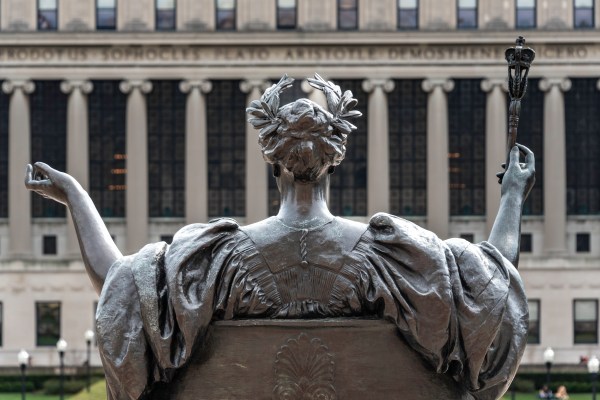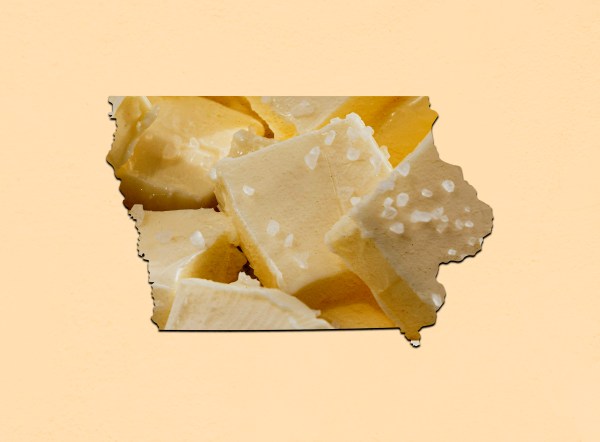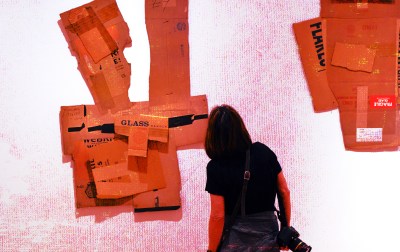Turn any article into a podcast. Upgrade now to start listening.
Premium Members can share articles with friends & family to bypass the paywall.
From her perch on the white linen sofa at her former friends’ Manhattan loft, the unnamed narrator of Zoe Dubno’s novel Happiness and Love recalls an art exhibition that had featured the works of a young artist named Simon. His paintings, while done in the style of old master portraits, portrayed individuals holding contemporary objects. Instead of a kitchen maid pouring milk, “a model with a fashionable mullet haircut was holding a carton of oat milk and wearing orange Crocs sandals”; instead of a queen wearing a jewel-encrusted gown, a sitter was donning Dior couture.
In commentary meant to lay bare the banality of New York’s avant-garde, Dubno’s narrator notes that her contemporary had made no aesthetic progress. Simon’s work seemed to convey no conceptual idea beyond “We now have different things than before.” (Her italics.) “What on earth was the artist doing—what was his idea?” the narrator asks.
Unfortunately for Dubno, the very same point could be made about her own artistic creation. Happiness and Love, Dubno’s recent debut novel, is a redux of Austrian writer Thomas Bernhard’s 1984 novel Woodcutters. Instead of exposing the shallowness of self-important artists in 1980s Vienna as Bernhard does, Dubno’s book attempts to do the same of the art scene of 2020s Manhattan while mimicking the narrative structure, dialogue, and distinctive form (both novels are written as one long, unbroken paragraph) of its predecessor. But Happiness and Love contributes little, if anything, that Woodcutters hadn’t supplied already.
Still, what Happiness and Love does get right is its cultural critique. The art world is often vapid and overly obsessed with the appearance of creativity and intellectualism rather than with creation and intellect themselves. Dubno’s narrator has learned this first-hand: She, like Dubno herself, is a young writer from New York who once craved membership within “an artistic community of real artists” but, after having gotten her wish, becomes disillusioned with her new social scene and proceeds to spend five years in Rome and London avoiding it. Upon returning to New York once her visas have run out, she bumps into her old artist friend Eugene, who invites her to a dinner party he is hosting with his partner Nicole.
Though the story takes place over the course of one evening at Eugene and Nicole’s, the narrator provides lengthy reflections on her engagements with the Dimes Square art scene up to that point. In long-winded rants, the narrator rips apart her former friends’ preoccupation with the capital, social or otherwise, that art affords them—she even suspects that some of them “knew inside that they were frauds.”
Eugene and Nicole, who, years ago, took the narrator into their little clan of “people who called themselves artists and directors but in fact worked as content creators and creative directors,” wish only to prove their continued relevance to their fellow cultural elites. Their signature dinner parties are simply an excuse to dangle their immense wealth, coveted art collection, and tasteful furniture in front of their guests—and casually mention how they were close friends with whatever director had been written up in the Sunday Arts section of the New York Times. Insofar as Eugene and Nicole do actually engage in art-making or curating, respectively, what they produce is either a rip-off of someone else’s ideas and work, utterly brainless, or both.
Everyone else attending the dinner party is just as consumed by thoughts of their own image. The writer Alexander, the narrator surmises, feigns bad table manners in an attempt to portray himself as a gritty, struggling artist of humble origin rather than the private university graduate from an upper-middle-class family he really is. The actress who is the guest of honor wears a light pink Chanel tweed blazer, which, according to the narrator, is “a wardrobe staple for people who know nothing about fashion but desperately want to show that they’ve arrived.”
Happiness and Love indubitably succeeds in painting a picture of an art scene filled with pseudo-intellectuals and social climbers, not genuine artists or even authentic human beings. As Bernhard put it in Woodcutters, these art world elites “pretend to be educated, but they’re not; they pretend to be artistic (as they call it), but they’re not; and they pretend to be humane, but they’re not.” They’ve successfully instrumentalized their social connections, contrived appearances, superficial interest in their medium or subject matter, and whatever modicum of artistic talent they might possess in order to get their paintings hung in the best museums, have their books issued by the best publishing houses, and be awarded the most prestigious prizes. Yet, “They’ve never had the courage or the strength or the love of truth that is required for real living.” When people live solely in accordance with fashion, as these pseudo-artists do, becoming “slaves to fashion for the sake of show,” they do not stand much of a chance of expressing something true about the human condition—that is, what art is meant to do in the first place.
Dubno’s diagnosis of cultural elites as creatively, intellectually, and morally bankrupt is well-suited for our current sociopolitical moment. Americans’ trust in institutions, from the federal government to traditional news sources, is hitting historic lows. At the root of this distrust seems to be a feeling that those leading these institutions are more interested in pursuing private gain or promoting a fashionable ideology than they are with serving higher ideals like truth or the common good. In many ways, the culture has already called B.S. on the entire class of people to which the objects of Dubno’s derision belong. Those so-called artists in New York who are afforded great prestige for creating works they claim interrogate “notions of performativity, of objects’ existence in space, of ontology” have lost legitimacy in the eyes of so many. We are now all able to admit that the emperor has no clothes.
But as is always the case, critiquing a certain state of affairs is much easier than envisioning a better alternative. Dubno’s unsavory evaluation of the world of high art does not hint at a way forward. Nor does it fully draw out the new ways in which our creative class may fall victim to a hyperfixation on style over substance in the digital age.
And the new ways are important. The rise of the creator economy has enabled artists to pursue creative careers without directly participating in big-city art scenes and the frivolous status games that accompany them. A writer living in Georgia, for example, may gain thousands of paid subscribers on Substack without ever having to network with editors at The New Yorker or curry favor with the likes of Eugene and Nicole. Nevertheless, creatives relying on digital media to share their work may face a toxic professional culture of their own. Online “content creators” are incentivized to drive digital engagement, accrue brand deals and sponsorships, and produce work that their followers will continue to pay to access—none of which necessitate the creation of good art. Under these circumstances, art might come to be viewed merely as a vehicle for gaining wealth and social clout, just as it is (at least on Dubno’s and Bernhard’s accounts) in the established artistic communities of cities like New York or Vienna.
A real alternative to the vapid creative class Dubno describes, then, would not be artists whose success is defined by their ability to amass impressive social media follower counts rather than their capacity to secure “a sufficient number of exhibitions in Chelsea with big gallery dinners to follow.” But even though Dubno does not spell out the details of such a real alternative, she does provide hope that individual artists may be able to break free from the perverse tendencies of the broader cultural elite. For as much as Happiness and Love is a satire of the art world, it is also a story about growing up: The narrator notes at numerous points in the story how much she’d admired her former friends, mentors, and benefactors—and how terribly mistaken her evaluations of them were. If the experience of Happiness and Love’s narrator is any indication, the validation that a young artist receives from members of an influential, albeit corrupt, artistic establishment may be pivotal in assuring her that she does, indeed, have promise and should continue to pursue her craft. Over time, however, the admiration—the love, even—that she initially had for these individuals can begin to fade. But perhaps it is precisely this disillusionment that finally frees the artist to be her own, true self, unbeholden to any concerns about the approval or disapproval of her social set—and maybe it is only then that she is finally capable of producing the good, authentic artwork that she clearly believes it is possible to create.






Please note that we at The Dispatch hold ourselves, our work, and our commenters to a higher standard than other places on the internet. We welcome comments that foster genuine debate or discussion—including comments critical of us or our work—but responses that include ad hominem attacks on fellow Dispatch members or are intended to stoke fear and anger may be moderated.
With your membership, you only have the ability to comment on The Morning Dispatch articles. Consider upgrading to join the conversation everywhere.